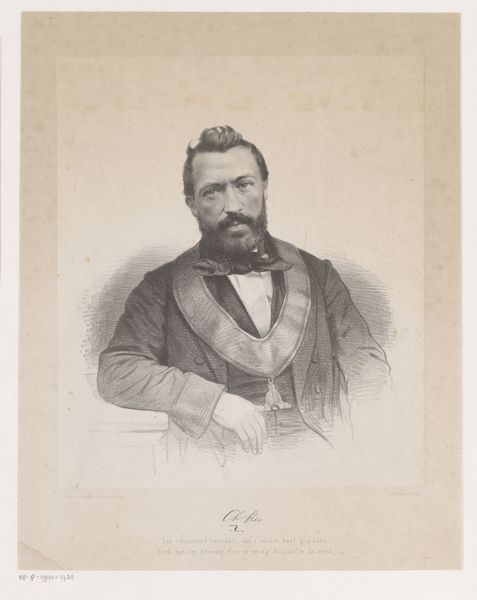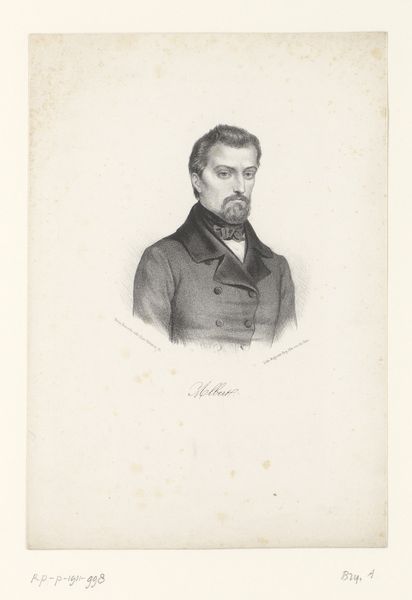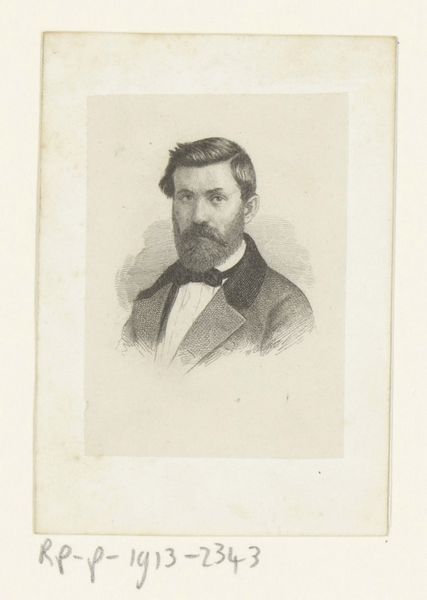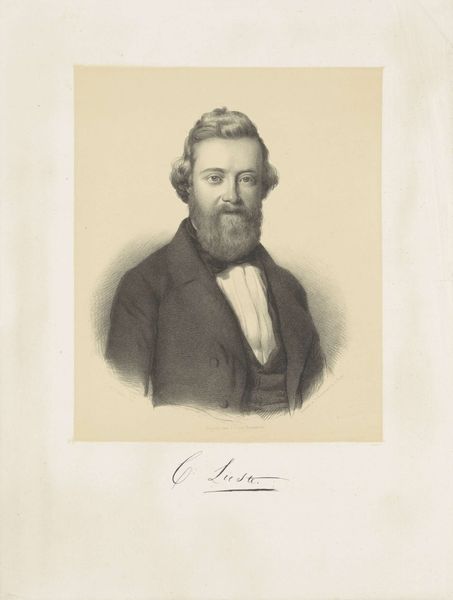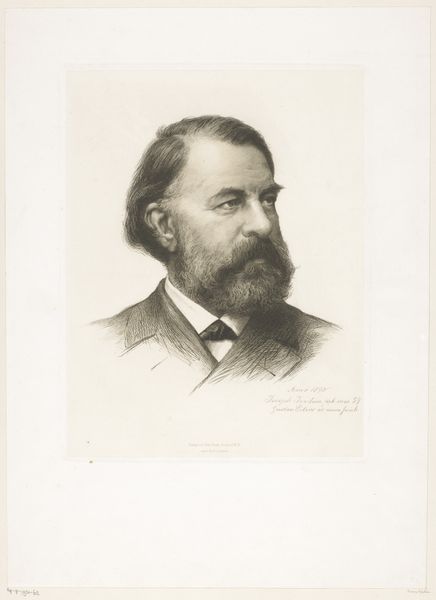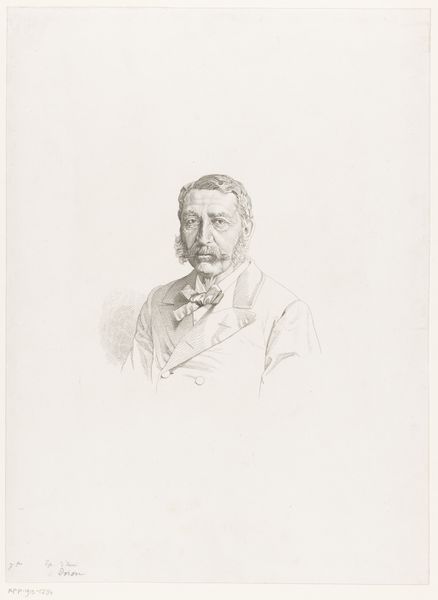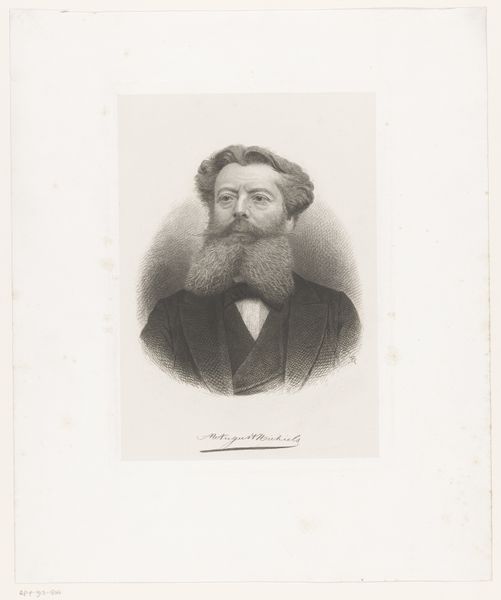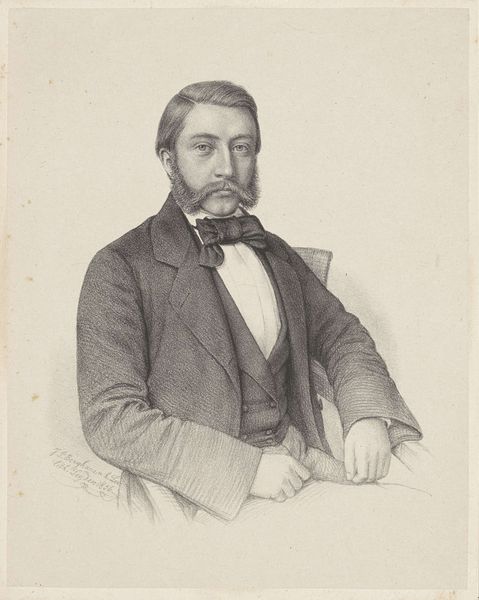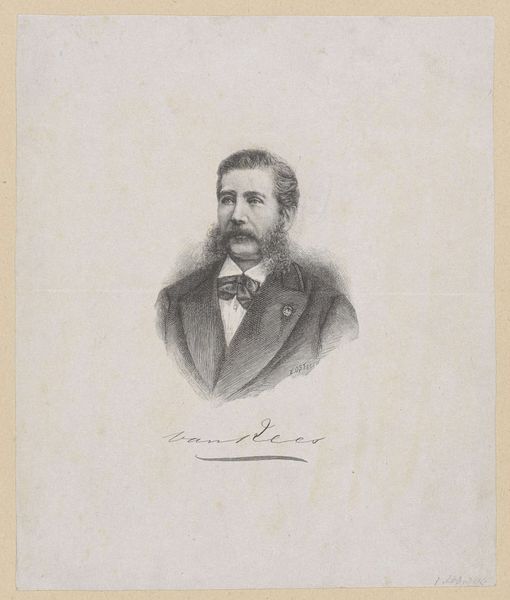
print, engraving
#
portrait
# print
#
genre-painting
#
history-painting
#
engraving
Dimensions: height 167 mm, width 137 mm
Copyright: Rijks Museum: Open Domain
Editor: This is a print called "Portret van baron Henri Leys," possibly from 1869, by Etienne Gabriel Bocourt. It's an engraving, and the detail is incredible. There's something quite stern and imposing about the Baron; what catches your eye when you look at it? Curator: Well, aside from that magnificent beard!, I'm drawn to the print's reliance on an earlier photographic image. Think about it - the print isn’t “directly” from life but mediated, filtered. So what layers of ‘truth’ are at play here? Bocourt, in rendering the photo into a print, imbues Leys with an almost theatrical gravitas. It’s history, seen through the lens of both photography and engraving— a kind of historical double exposure. Editor: A double exposure, I love that. So, is it accurate to call this a straightforward portrait, then? Considering all those layers? Curator: Accurate in its resemblance, perhaps. But art seldom just replicates; it interprets, elevates, sometimes even mythologizes. Bocourt seems less interested in mere likeness, and more interested in portraying Leys as a figure of consequence, a man etched – quite literally – in history. It makes me wonder what the original photograph was like... Did it capture this level of intensity? Editor: That's a good point. Maybe the sternness comes from Bocourt himself. He amplified something already present in the photograph. This has made me consider portraits as more than just representations! Curator: Exactly! They're dialogues, reinterpretations, conversations across time and media. Now, every time you look at a portrait, what questions will *you* bring to it?
Comments
No comments
Be the first to comment and join the conversation on the ultimate creative platform.
